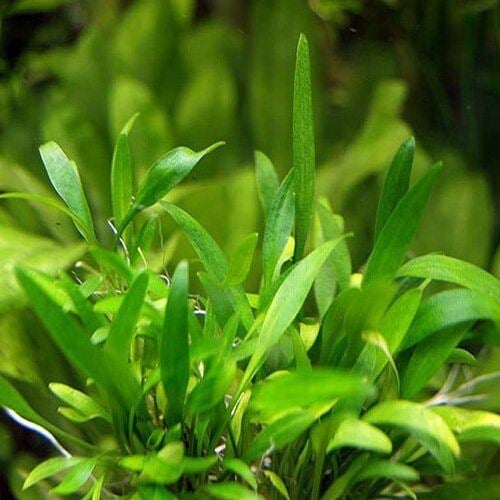Transform your aquarium into a verdant underwater garden with our expert guide on Cryptocoryne Parva care.
Discovering Cryptocoryne Parva: A Miniature Marvel for Aquariums
Cryptocoryne Parva, the smallest of the Cryptocoryne species, is a highly sought-after live aquarium plant known for its lush greenery and ease of care. Native to Sri Lanka, this diminutive plant is perfect for adding a touch of elegance to any aquascape. Its slow growth and compact size make it ideal for the foreground of tanks, offering a beautiful contrast to other aquatic plants.
Enthusiasts of live aquarium plants prize Cryptocoryne Parva for its hardy nature and minimal requirements. Its adaptability to a range of aquatic environments makes it a versatile choice for both novice and experienced aquarists. By providing the right conditions, one can ensure this aquatic gem thrives, enhancing the aesthetic appeal of their underwater oasis.
Optimal Water Conditions for Thriving Cryptocoryne Parva
The key to a thriving Cryptocoryne Parva lies in replicating its natural habitat's water conditions. This plant prefers soft to moderately hard water, with a pH level ranging from 6.0 to 7.5. Stable water temperatures between 72°F to 78°F are ideal for promoting healthy growth. While Cryptocoryne Parva can survive in a range of conditions, sudden changes in water parameters can lead to 'Crypt melt', where the plant loses its leaves. Regular monitoring and gradual adjustments help in maintaining a balanced environment for your Cryptocoryne Parva.
To further enhance the growth of Cryptocoryne Parva, adding CO2 to the aquarium can be beneficial, although it's not a strict requirement. Regular water changes and a consistent maintenance routine will ensure your live aquarium plants receive the nutrients they need without the risk of algae overgrowth or toxin buildup.
Lighting and Substrate: Foundations of Cryptocoryne Parva Growth
Cryptocoryne Parva thrives under moderate lighting conditions, which allow it to photosynthesize effectively without encouraging excessive algae growth. An ideal lighting setup would provide 10 to 12 hours of light per day, simulating a natural day cycle. LED aquarium lights with adjustable intensity are a popular choice among aquarists for their efficiency and control.
When it comes to substrate, Cryptocoryne Parva has a preference for nutrient-rich setups. A fine-grained, iron-rich substrate is perfect for anchoring its delicate root system and providing essential minerals. Additionally, the use of root tabs can supplement the nutrient intake, especially in inert substrates, ensuring your Cryptocoryne Parva has all it needs for optimal growth.
Planting Techniques and Layout Tips for Cryptocoryne Parva Aquascapes
Successful planting of Cryptocoryne Parva begins with careful spacing. Since it's a slow grower, planting individual plants about an inch apart allows each one ample space to spread without overcrowding. This ensures each plant receives enough nutrients and light, preventing competition that could hinder growth.
For a visually appealing layout, consider using Cryptocoryne Parva in groups to create a lush, carpeted effect. Its small size also makes it perfect for filling gaps between rocks and driftwood, providing depth and texture to your aquascape. Patience is key, as it may take several months for Cryptocoryne Parva to form a full carpet, but the end result is a stunning tapestry of green that is well worth the wait.
Maintaining and Propagating Cryptocoryne Parva for a Lush Aquascape
Regular maintenance is crucial for keeping Cryptocoryne Parva healthy and vibrant. Trim any yellow or brown leaves to encourage new growth and prevent decay from affecting water quality. Fertilization should be balanced to avoid excessive nutrient levels, which can harm the plant and promote algae.
Propagating Cryptocoryne Parva is straightforward and rewarding. Once established, the plant will produce runners that can be separated and planted elsewhere in the aquarium. With time, these offshoots will grow into new plants, allowing you to expand your aquascape or share with fellow enthusiasts. Remember, patience is essential, as propagation is a slow process but results in a more diverse and sustainable aquarium ecosystem.
Additional Resources:
All About Cryptocoryne Crypts
The Beauty Of Red Cryptocoryne Plants
Cryptocoryne Lucens



.jpg?width=352&name=Betta%20Fish%20Live%20Plants%20ss%20(1).jpg)

.jpg?width=352&name=Monte%20Carlo%20-%20Aquarium%20Carpet%20Plant%20(1).jpg)
Leave a Comment